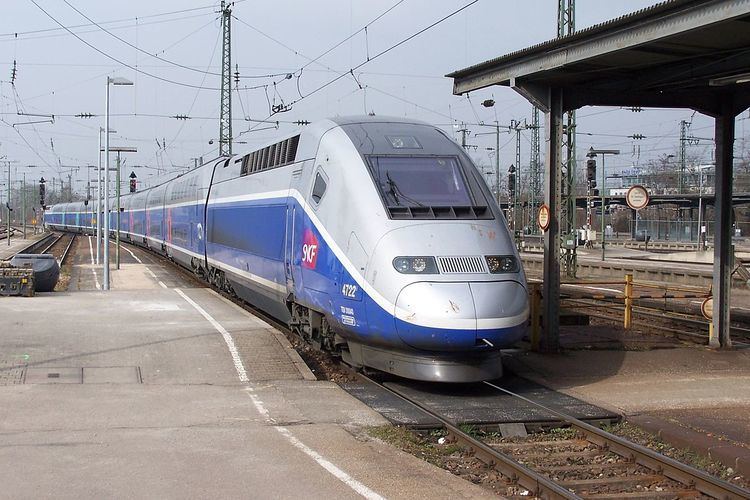In service 2011–present Entered service 2011 - present | Constructed 2011 - 2019 | |
 | ||
The SNCF TGV 2N2 or Euroduplex is a high speed TGV train built by Alstom and operated by SNCF, the French national railway company and ONCF, the Moroccan national railway company. It is the third generation of the TGV Duplex bi-level train. They are currently being built by Alstom at Belfort and La Rochelle. The first sets entered passenger service on 11 December 2011. It succeeds the TGV Duplex Dasye.
Contents
Description
The TGV 2N2 trains are an evolution of the TGV Duplex Dasye and still share the main features. The drive is of type TGV POS asynchronous traction motors, European signaling system European Rail Traffic Management System. The trailers feature new interiors, electric sockets fitted in both classes and improved information systems.
The main differences with the TGV Duplex Dasye:
History
Riding on the success of the concept TGV Duplex and praised by customers, the company decided to develop a fleet of interoperable trains, especially suitable for 15 kV 16 ⅔ Hz (only 8 trains TGV Sud-Est could operate at this current and 19 trains are then TGV POS), the train is a tricurrent version of TGV Duplex.
In parallel with the development of high-speed lines internationally, Alstom SA won a tender for the supply of equipment for high-speed TGV Morocco, the first high-speed train on the African continent.
SNCF
In June 2007, in addition to 25 extra TGV Dasye sets (+ 3 others 2008), the SNCF has placed a large order for 55 Alstom tricurrent high speed trains, TGV 2N2.
These 55 trains can be divided into:
In April 2010, the first train RGV, numbered 4701, was tested at La Rochelle. On 16 June 2010, the train arrived at the site of ELWT Conflans to be equipped with different systems to perform many tests in the coming months before commercial operation. Between 20 and 30 July 2010, the train conducted speed tests in Switzerland, Germany, the Netherlands, Belgium and the French Alps.
SNCF and Alstom organized the symbolic delivery of the first train on May 30, 2011 on the LGV Est.
The 2007 contract included an option for 40 additional trains. SNCF exercised this option to take delivery of the second batch of Euroduplex sets from 2015. These sets will then have 95 cars. These trains will be able to replace some sets on TGV Atlantique or even LGV Est services in 2016.
ONCF
In December 2010, the Moroccan company ONCF ordered 14 sets of the Euroduplex for Casablanca—Tangier high-speed rail line. The contract of €400 million expected commissioning in 2015. The trains are electrified at 25 kV and 3 kV and can operate at up to 320 km/h (199 mph) on the section Tangiers — Kenitra and between 160–220 km/h (99–137 mph) on the Moroccan conventional network.
The Moroccan trainsets have a total capacity of 533 passengers in two first class carriages, five second class carriages, and a catering coach, instead of the French configuration of three first class coaches, four second class coaches, and a catering coach.
Usage
Since its introduction into commercial service, the 4700 operate priority international services:
The trains are used on domestic routes (via the LGV Est to Strasbourg, Reims, Remiremont, but also via the Rhin-Rhône to Colmar and Mulhouse among others).
The trains 800 are designed to provide international services to Spain:
